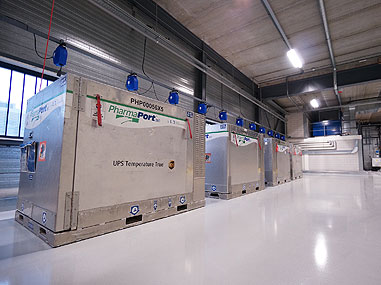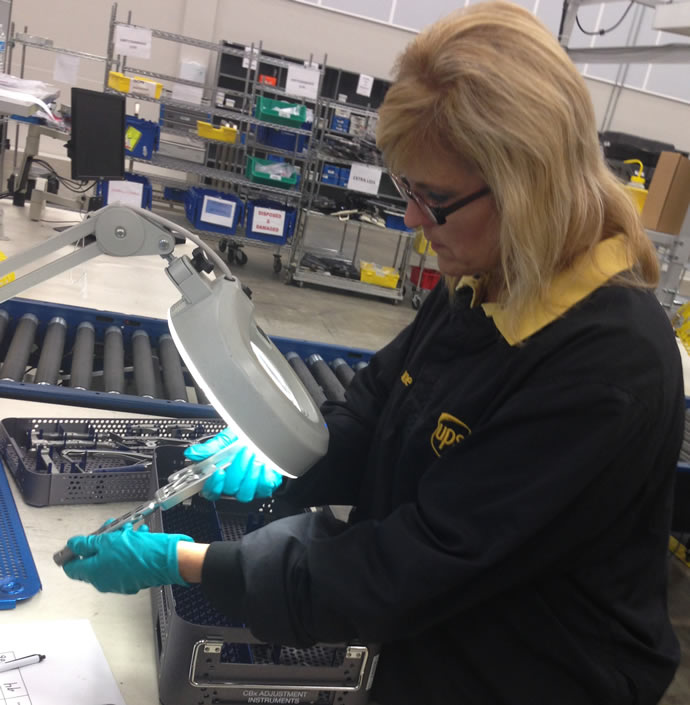
UPS in late September announced the opening of a new healthcare-compliant distribution and warehousing facility at a site in Swedesboro, N.J., near the company’s Philadelphia International Airport hub. The multi-client, 208,000-sq.-ft. facility is the first in UPS’s network to offer medical device companies comprehensive logistics services such as autoclave capabilities, instrument inspection and surgical set replenishment, among other services. The autoclave decontaminates using steam heated at 300 degrees.
“The ability to decontaminate surgical kits, replenish and repackage instruments, and respond quickly to urgent medical needs is pivotal to our customers’ market success, and UPS’s growing warehousing, distribution and value-added services are playing a key role,” said David Quintilio, UPS vice president of healthcare logistics, in a company release.
The facility is called a “loaner hub,” because it delivers kits from companies such as Alphatec Spine to hospitals. After a procedure, the kits are sanitized and returned to Swedesboro for replenishment, with many of them shipping back out within 24 hours. The service reaches all the way back to manufacturing, as it means fewer kits need to be manufactured in the first place.
The facility is fully integrated into UPS’s overall transportation and field stocking location (FSL) network, introduced in 2014, which makes it possible for healthcare manufacturers and distributors to reach more than 80 percent of US hospitals within four hours.
“UPS continues to strengthen our integrated network globally to help manufacturers lower costs, streamline inventory and meet increasing demands,” said John Menna, UPS vice president of global strategy, healthcare logistics. “In the US, building out a best-in-class, comprehensive service that integrates a loaner hub with our vast FSL and global transportation network raises the bar and further demonstrates our commitment to the healthcare industry.”

That commitment also showed with last year’s acquisitions of Poland-based pharmaceutical logistics firm Poltraf to serve Central and Eastern Europe with three new facilities ; the UK’s Polar Speed, and Hungary-based CEMELOG, along with the opening of multiple new healthcare locations in Mexico, with more to come throughout Latin America. (Site Selection interviewed John Mennain spring 2014.) UPS continues to vie with DHL and its ColdChain networkfor dominance in the healthcare niche.
The company also opened a new healthcare-dedicated air freight forwarding facilty at Amsterdam Airport Schiphol in Roermond, Netherlands, in May. The 600-sq.-m. (sq.-ft.) facility is Good Distribution Practice (GDP)-compliant, and features 15ºC -to-25ºC and 2ºC-to-8ºC temperature zones as well as 24/7 monitoring and alarm systems to protect the integrity of temperature-sensitive healthcare shipments.
“With the rise of biologics and temperature-sensitive products as well as changing regulations governing the transportation of pharmaceuticals across different geographies, companies need increased control and protection of their products during transit,” said Menna in May. “The new life-sciences center at Amsterdam Airport Schiphol allows us to process shipments under strict temperature conditions according to expectations set out in the EU GDP guidelines.” The company’s facility allows it more control of the cross-docking and interim storage of healthcare shipments, “helping customers mitigate risks and comply with high quality standards.”

